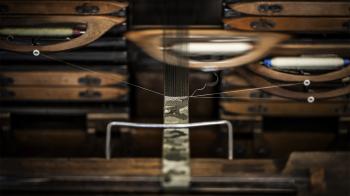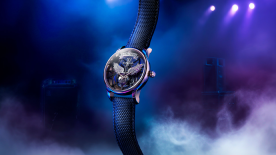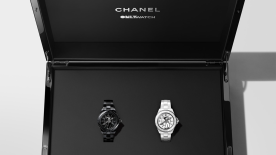This simple idea transformed the civilian fob watch into a military device. Watch strap history has come a long way since then. I would tend to regard the period between 2000 and 2020 as the heyday of straps and bracelets, during which their long history intensified.
Today, collectors can have their watches fitted onto straps /bracelets invented in 1917, 1920, 1947, 1963, or even at the turn of the millennium. In just a few seconds, they can adopt a military look with a 1970s NATO strap, or choose a 1943 ‘Bund’ model. Such an abundance of options is unprecedented – and deserves closer examination.
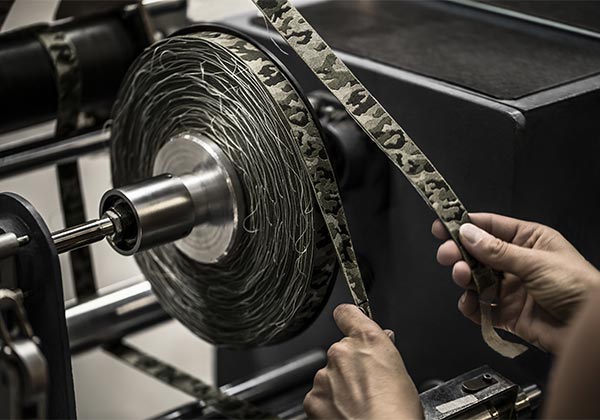
The strap/bracelet renaissance really got going in 2000. But to understand the significance of this date, we need to go back a few years earlier: to 1993, when Panerai was reborn. Its huge, uncompromising timepieces, fitted on astonishing sharkskin straps, caused an uproar. Slowly but surely, they emerged as one of the major watchmaking phenomena of the 1990s and 2000s.
In early 2000, the fans of the Florence-based brand got together and organised themselves into the first online watch-lovers group: the Paneristi. The group was exceptionally lively, and served to turbocharge Panerai’s marketing machine.
As they delved into the brand’s history, fans discovered increasing numbers of documents, photos, and relics. They were especially enthralled by one feature in particular: the straps on the first diving watches. With the passage of time – and extensive use in water – the straps developed a patina, blemishes, tears, and other damage that ended up making them more beautiful than ever. The Paneristi sought the same yesteryear charm for their Luminors. They took photos of their watches and customised straps, posting the results on their forum – and so the strap culture was born.
Everywhere, budding craftsmen got to work. United by a single passion, they recreated the straps on the first PAMs, as well as inventing new ones. There were no limits to their imagination. A new industry had just been birthed. It was helped on its way by this being a time when watchmaking was undergoing several fundamental changes:
• Individualism: the need to stand out from the crowd was one of the major trends of the 2000s. Watch-lovers wanted ‘unique’ timepieces; the strap/bracelet addressed this need. • Internet: it became easy for micro-enterprises to reach their fans directly. All they needed to do was link in with the many other emerging websites and media, post photos – and wait.
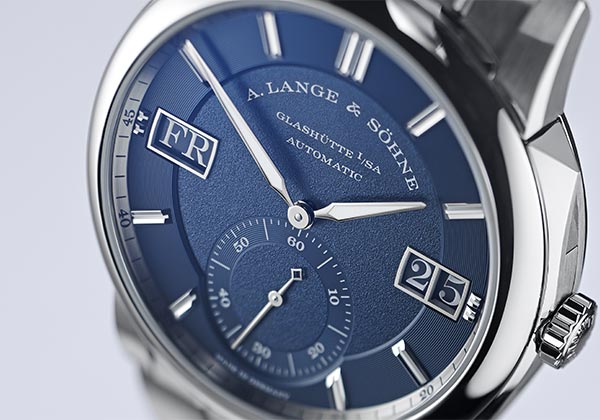
• Vintage and neo-vintage watches: having been spurned in the 1980s and 90s, these pieces were making a comeback. Emerging as they did from the hidden depths of watchmaking, they also stirred up fresh interest in straps /bracelets from the golden years of the trade. Drawing inspiration from this success, the brands started leafing through their back catalogues. The resulting new ‘old’ watches did not sit very well on modern wristbands; fans were clamouring for a return to the charm of times gone by.
• Instagram: the medium in which image reigns supreme. Collectors flooded it with photos. And to keep up with the in crowd, it turned out to be that much easier – and cheaper – to change your strap/bracelet than to change your watch. The wristband’s time had come.
Customisation, affordability, social media, and image proved to be a potent combination, one that strap and bracelet sellers could tap into. They paid attention to the fans, reviving the great stars of the past.
Let’s take a quick look at some of these little items with such huge potential:
Luxury rubber: in the 1980s, MDM Hublot launched the first luxury watch to be fitted with a rubber strap – and it was highly successful. This trend gained further traction in the early 2000s, when Richard Mille dared to introduce straps made from highly innovative materials into the world of ultra-luxury.
The riveted Pilot strap: when IWC launched its Big Pilot, it gave it a strap to match its gigantic size. This marked the return of the riveted strap of the 1940s, which was to become one of the brand’s classics.

The Bund: during World War II, the Luftwaffe invented a strap that kept the watch case separate from the wrist: at high altitudes, steel watches became cold, and could injure the wrist. Later, this strap became the legendary Bund (short for Bundesrepublik). It came back into fashion in 2017, when Paul Newman’s Rolex Daytona fetched over $17 million at auction; Newman used to wear his watch on a black Bund strap, and that was all it took to boost demand. In 2018, TAG Heuer produced a Carrera Fragment limited edition on a patent leather Bund strap.

*On the occasion of GMT Magazine and WorldTempus' 20th anniversary, we have embarked on the ambitious project of summarising the last 20 years in watchmaking in The Millennium Watch Book, a big, beautifully laid out coffee table book. This article is an extract. The Millennium Watch Book is available on www.the-watch-book.com, in French and English, with a 10% discount if you use the following code: WT2021.
